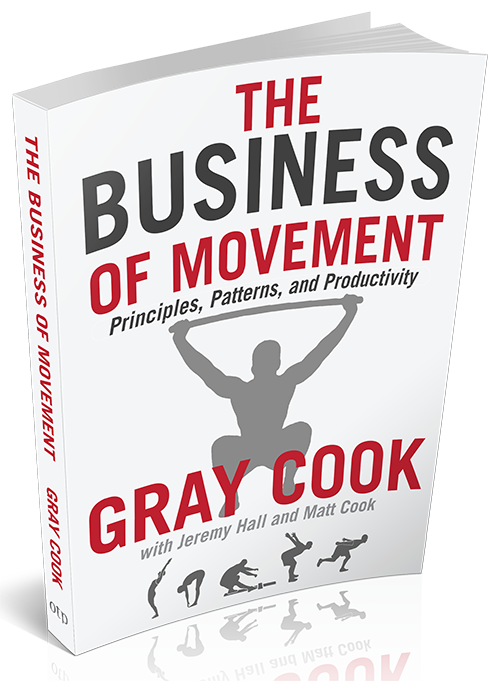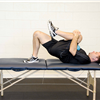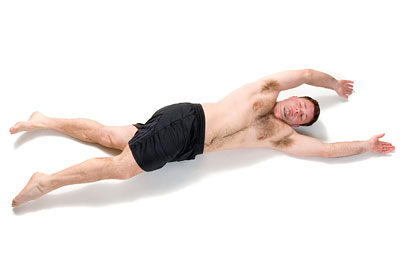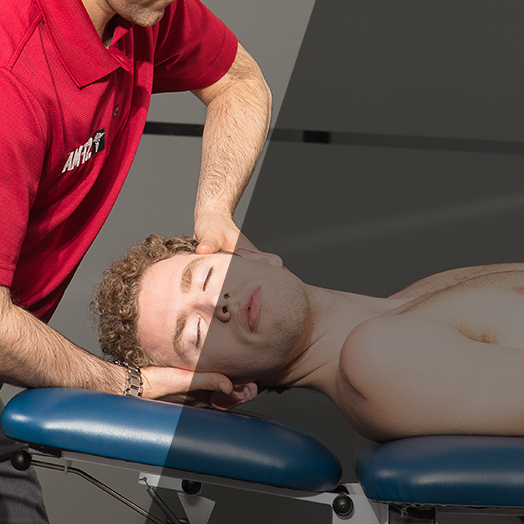Correcting Physical Vitals of Dysfunction and Pain
Written by Brandon Bennett SFMA
 This article was adapted from The Business of Movement, a new book by Gray Cook.
This article was adapted from The Business of Movement, a new book by Gray Cook.
The Business of Movement
Principles, Patterns, and Productivity
Now that you know the Functional Movement System screens and assessments, how will you use them in your business? Gray Cook returns with the answers to your fitness and clinical business questions.
If you have the skills or training, the first order of business for any corrective strategy is getting a patient out of pain. If local and global assessments uncover painful or inflamed joints or muscles, the SFMA provides the opportunity to look for the dysfunctional, non-painful patterns where you can focus your attention. That doesn’t imply that you’re delaying action on painful or inflamed parts, but if you deem this patient appropriate to take down the path of exploring the dysfunction, you need to identify the highest-value DN patterns to address.
The breakouts for each top-tier pattern of the SFMA point toward either a loss of freedom in soft tissues or joints, or the loss of integrity, stability, or motor control. It’s a rare occurrence when a patient presents with a single dysfunctional pattern or a problem that’s purely tissue-related or only a motor control deficit. Knowing that you’re likely to overturn more than one area to address, it’s up to you to decide how deeply you want to engage with dysfunctional patterns in a single session.
If someone presents with more than three DN patterns in the assessment, it’s more valuable to limit yourself to focusing on just the one or two most fundamental patterns. This usually offers a better approach because the likelihood of a related painful area becoming irritated increases the more testing you perform. Luckily, if you select the right pattern to focus on, improvements can often manifest in the other DN patterns as well. Narrowing your choices to the most critical patterns comes from understanding how to scale the demands of movement shifting from simpler to more complex patterns.
Cervical Spine → Shoulder → Multi-segmental Flexion or Extension → Multi-segmental Rotation → Single-Leg Stance → Squat
Forward bending—multi-segmental flexion or extension—is often the most obvious and common DN pattern we see in our testing. The thinking often goes that aggressively breaking down and correcting that pattern is more efficient because it involves body segments linked to the other patterns. That logic isn’t wrong, but initially attempting to correct a more complex pattern can present another instance where looking for efficiency first limits our effectiveness. Because that larger pattern consists of simpler patterns of the neck and shoulder, dysfunction of those patterns may actually be driving poor movement of more complex patterns.
For that same patient with dysfunctional forward-bending who also demonstrates a DN in cervical mobility, spending three minutes addressing the cervical spine could:
▶ Take DN multi-segmental flexion or extension to FN—confirming the neck was the weak link
▶ Produce some improvement in the quality of movement—suggesting the neck was part of the problem
▶ Produce no change at all—telling us that dysfunction at the neck was unrelated to the multi-segmental pattern
The starting point of correction is to break down dysfunctional patterns into parts and to progressively integrate the parts back into the patterns of movement. The effectiveness of a single intervention can spread across multiple patterns, making the person more efficient as a by-product. At worst, it just provides valuable data to continue to drive the treatment.
Related Resources
Please login to leave a comment
1 Comments
-
Angela deBorja 6/21/2022 12:58:02 PM
Great article on how to prioritize what to treat first. Thank you!





